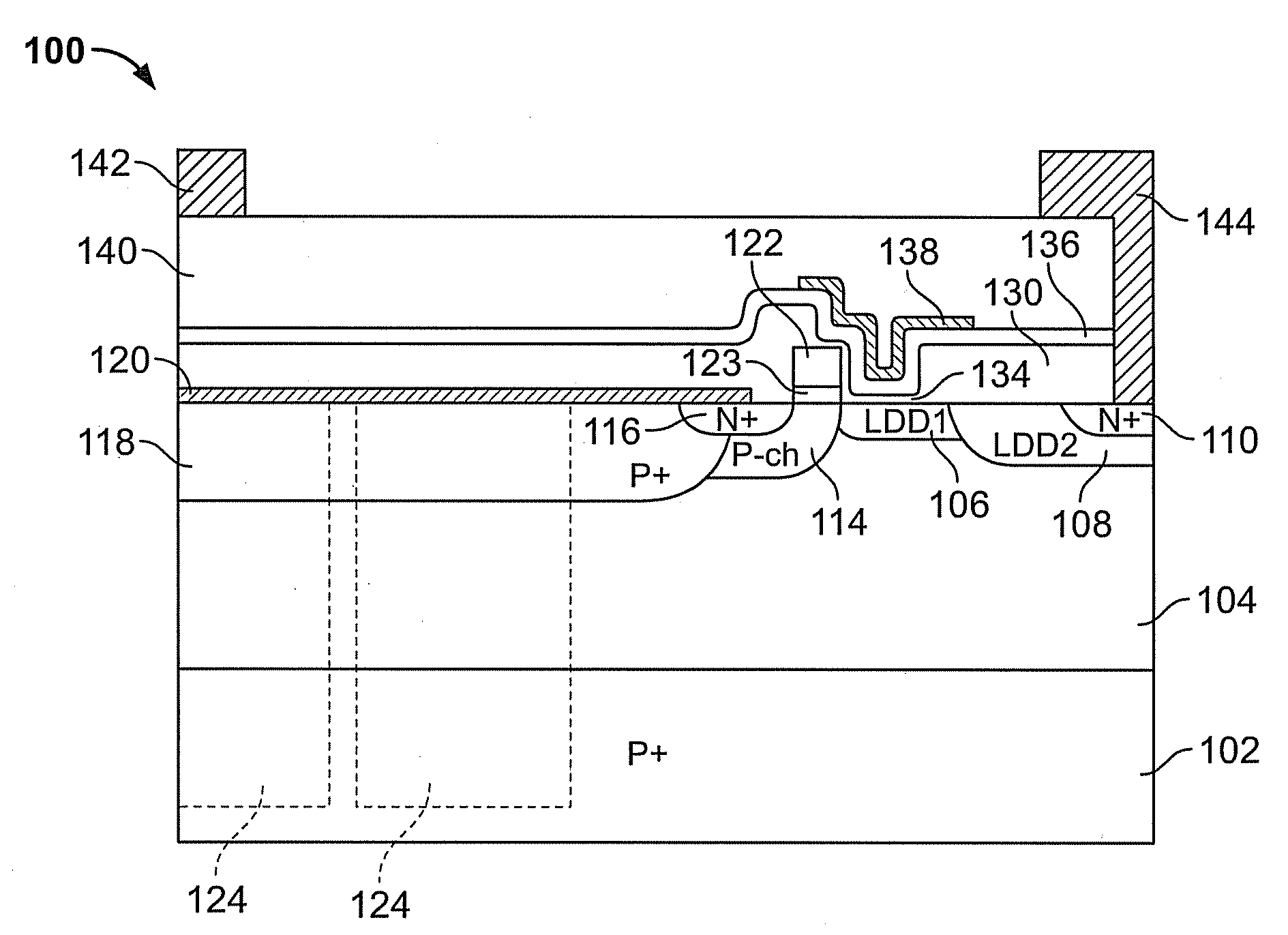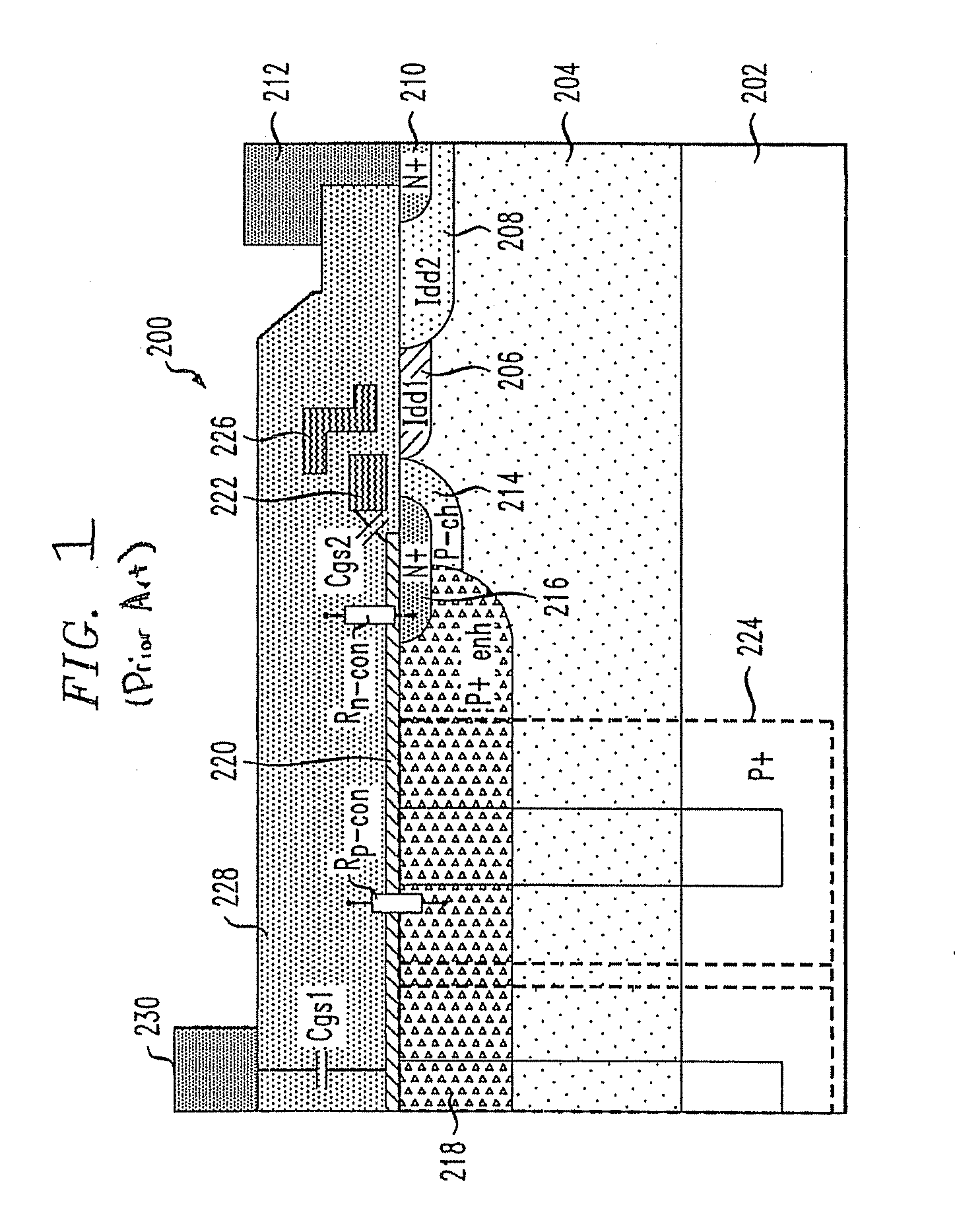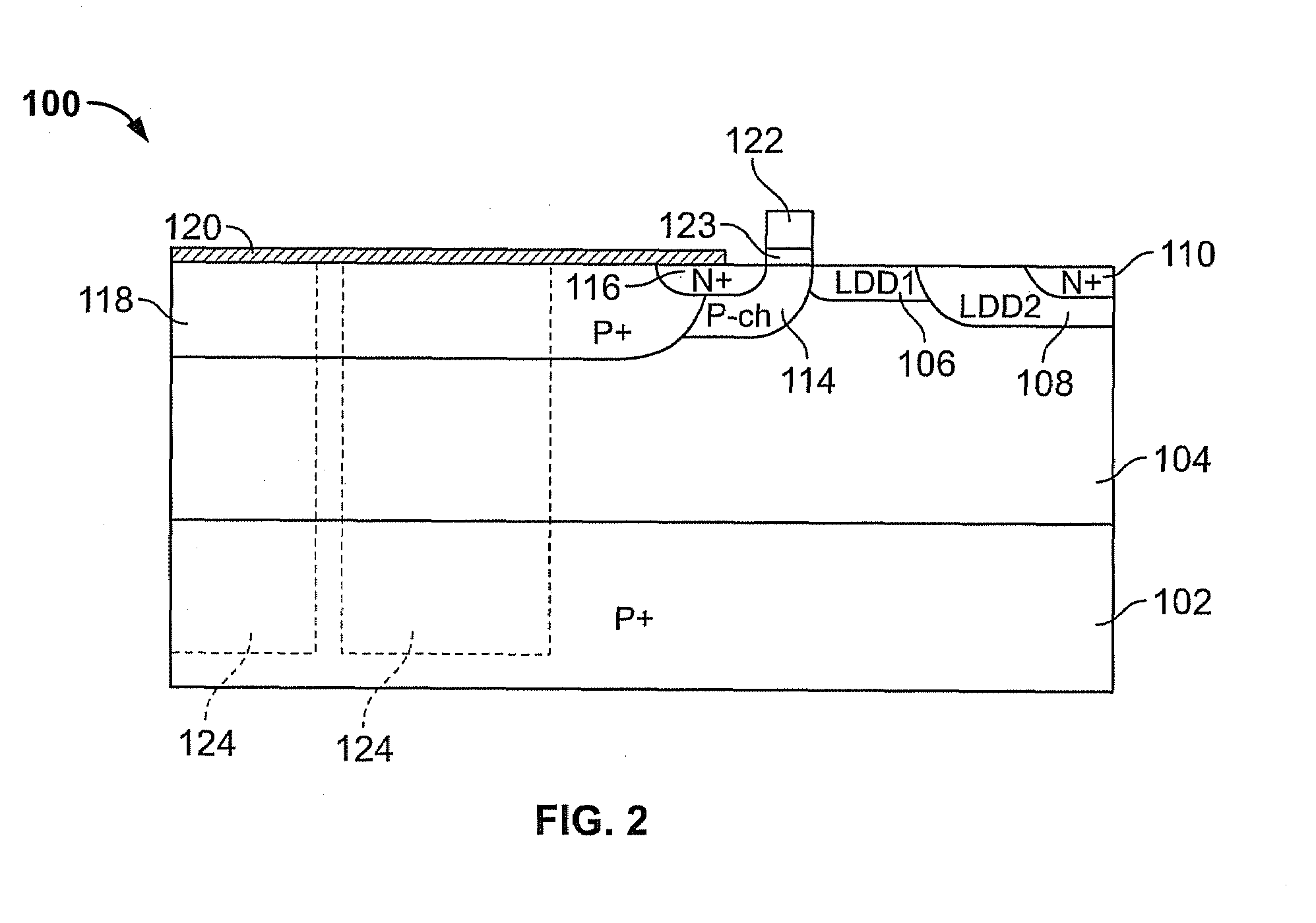Mosfet device having dual interlevel dielectric thickness and method of making same
a technology of dielectric thickness and mosfet, which is applied in the direction of mosfet devices, basic electric elements, electrical appliances, etc., can solve the problems of reduced transconductance, increased threshold voltage of devices, and reduced device performance, so as to reduce hot carrier injection
- Summary
- Abstract
- Description
- Claims
- Application Information
AI Technical Summary
Benefits of technology
Problems solved by technology
Method used
Image
Examples
Embodiment Construction
[0011]As used herein, the following dopant concentrations are distinguished using the following notations: (a) N++ or P++: dopant concentration of 5×1019 atoms / cm3 and greater; (b) N+ or P+: dopant concentration of 1×1018 to 5×1019 atoms / cm3; (c) N or P: dopant concentration of 5×1016 to 1×1018 atoms / cm3; (d) N− or P−: dopant concentration of 1×1015 to 5×1016 atoms / cm3; (e) N−− or P−−: dopant concentration 15 atoms / cm3.
[0012]It should be appreciated that, in the case of a simple MOS device, because the MOS device is symmetrical in nature, and thus bidirectional, the assignment of source and drain designations in the MOS device is essentially arbitrary. Therefore, the source and drain regions may be referred to generally as first and second source / drain regions in some cases, respectively, where “source / drain” in this context denotes a source region or a drain region. In an LDMOS device, which is generally not used in a bidirectional mode, such source and drain designations may not b...
PUM
 Login to View More
Login to View More Abstract
Description
Claims
Application Information
 Login to View More
Login to View More - R&D
- Intellectual Property
- Life Sciences
- Materials
- Tech Scout
- Unparalleled Data Quality
- Higher Quality Content
- 60% Fewer Hallucinations
Browse by: Latest US Patents, China's latest patents, Technical Efficacy Thesaurus, Application Domain, Technology Topic, Popular Technical Reports.
© 2025 PatSnap. All rights reserved.Legal|Privacy policy|Modern Slavery Act Transparency Statement|Sitemap|About US| Contact US: help@patsnap.com



